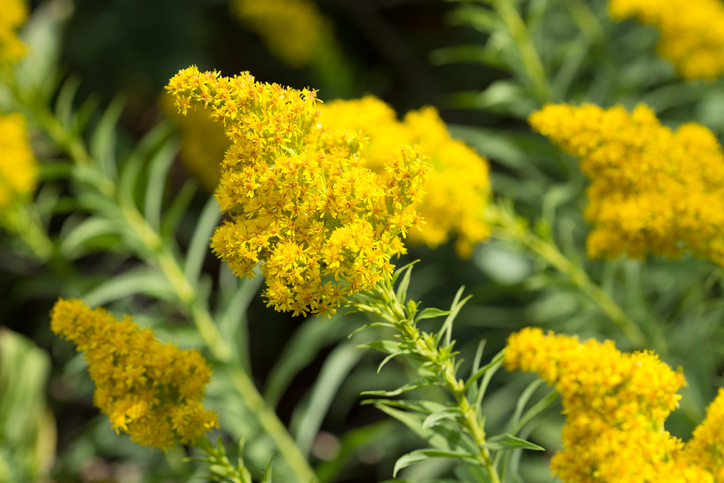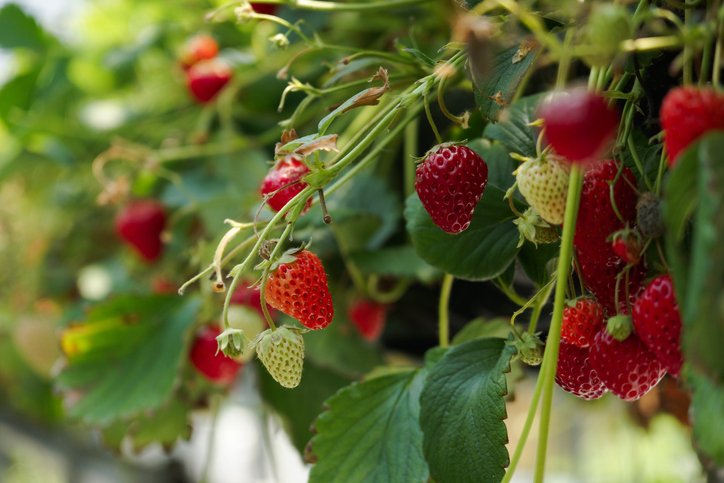
5 Unexpected Gifts of Cyclical Living
Learn more about the benefits of cyclical living and how getting out of a timeline-based mindset ...
jacoblund/Getty
Too often when we speak of spirituality, I think we confine the conversation to human relationships with the Divine. Whether we refer to God, Goddess, Higher Power, The Force, Universe, True Self, or some other sacred name, our practices can either become exceedingly inward or supremely transcendent. What might we learn from connecting to our earth-tethered kin?
In his book, Iwígara: The Kinship of Plants and People, ethnobotanical scholar Dr. Enrique Salmón draws on the collected wisdom of his Rarámuri lineage to introduce readers to 80 plants, employing a worldview that perceives plants as relatives.
“Iwígara channels the idea that all life, spiritual and physical, is interconnected in a continual cycle and expresses the belief that all life shares the same breath. We are all related to, and play a role in, the complexity of life,” Salmón explains.
Admittedly, it’s easy to think that plants are placed here for us―their job to make the air breathable or feed our bodies. And yet, this is naïve and smacks of human superiority. Over 80 percent of the biomass on Earth is plants—this planet is more theirs than ours. What’s more, there’s no denying that plants have complex lives of their own. In fact, researchers at the International Laboratory for Plant Neurobiology declare, “Plants are as sophisticated in behavior as animals, but their potential has been masked because it operates on time scales many orders of magnitude less than that operating in animals.”
And so, I wondered: What might a spiritual relationship with individual plants—rather than an “I-love-nature-as-a-whole” view—offer? Curious, I decided to find out.
Goldenrod: Plant With a Bad Rap
Contrary to popular belief, it is not goldenrod that activates human sniffling and sneezing during summer allergy season. (Ragweed is the likely culprit.) For thousands of years, this open-field tall-stemmed one was used by indigenous peoples as a “gambling medicine.” Not to be confused with modern-day casino endeavors, Salmón suggests goldenrod represents the reverence of chance through the “unpredictable Trickster consciousness” and the “unexplainable gray areas of the cosmos.” Hmmm … can goldenrod help us embrace uncertainty and withstand conundrums?

How to Commune With Goldenrod
Oh, bright, yellow-flowered being—my apologies for blaming you for my hay fever. Teach me the wisdom of the prairies, meadows, and savannas. Whisper through the wind your expertise for rooting strong into the earth and achieving long life. Help me sway steadily through the unknown mysteries which swirl around me. Enable me to see the spectacular surprises of the cosmos.
Strawberry: Repairer of Relationships
Wild strawberries have spiritual significance for the Kashia Pomo, Kanatsiohareke Mohawk, Diné, Aniyunwiya, and other peoples, symbolizing spring and renewal. And, perhaps more fascinating, signifying love. According to Salmón, the origin story goes something like this: First Man and First Woman were quarreling. The Creator intervened to help First Man win back his lady by creating different berries and placing them in her path. Eschewing huckleberries and blackberries, finally, strawberries caught First Woman’s eye. As she stopped to nibble, she realized she missed her husband. Gathering up some berries, First Woman returned home to share them. And the couple lived happily ever after, I suppose.
How to Commune With Strawberry
Oh, lustrous, juicy wild one. Forgive me for taking you for granted. Teach me to be patient with my loved ones. Whisper to me reminders of the power of forgiveness when I am bent out of shape. Help me reunite those around me when they are in conflict. Enable me to sense the buzz of divine love that surrounds me at all times.

Talking with Goldenrod and Strawberry increased my awareness of their beingness. And that raised some moral considerations. Our relationship with vegetation is often a one-sided hierarchy, as we exercise a powerful dominance over them, choosing who gets to live, who gets transplanted or removed, and who will be eaten. Further, we force pesticides and other chemicals on our plant neighbors and even change their genetics to better suit our needs. Take some time to consider your interactions with the botanical world. Is there anything you might like to change about your relationships with green life?
My exploration into iwígara and plant-based spiritual practices raised a lot of questions. For example, my plant-powered diet means I need to eat some of my relatives. I wrestle with this—do plants feel pain? We don’t know. Research suggests intelligence, memory, and the ability to feel sensations―yet plants seem to lack pain receptors and nerves. But who knows? In the end, as spiritual seekers, we must live mindfully, with awareness of these paradoxes and quandaries, hoping the “unexplainable gray areas of the cosmos” become more apparent to us. I guess that means a little more prayer with Goldenrod is in order.
Spend some more time with plants—read “Are You Plant Blind?”

Get this article and many more delivered straight to your inbox weekly.